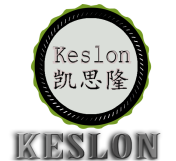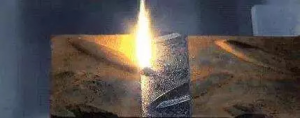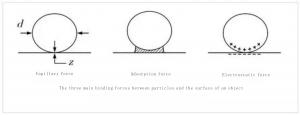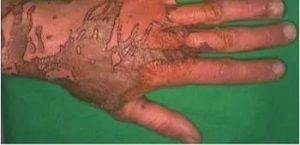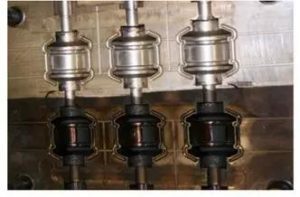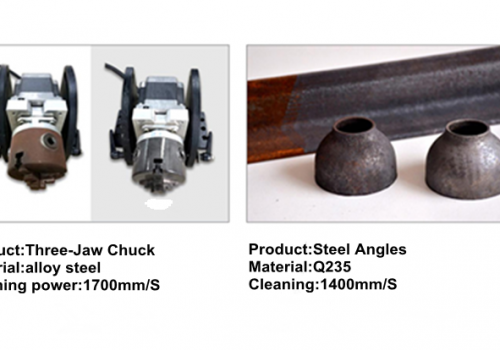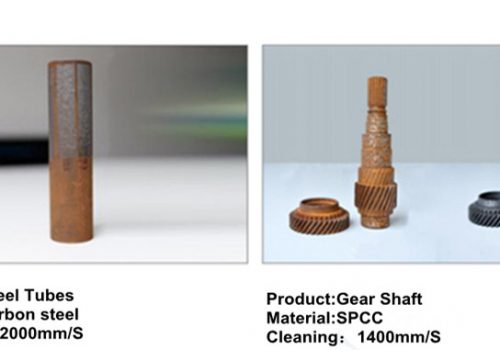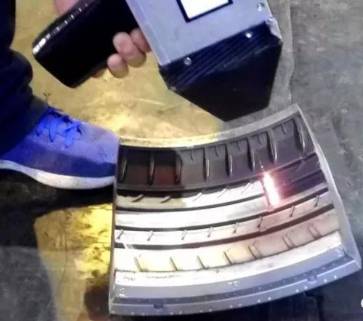A limpeza a laser tem as características de limpeza de não esmerilhamento, sem contato, baixo efeito térmico e adequado para objetos de vários materiais, e é considerada a solução mais confiável e eficaz.
Existem vários métodos de limpeza para equipamentos industriais de limpeza tradicionais, a maioria dos quais são limpos por agentes químicos e métodos mecânicos. Hoje, when my country’s environmental protection laws and regulations are becoming stricter and people’s awareness of environmental protection and safety is increasing, the types of chemicals that can be used in industrial cleaning will become less and less. How to find a cleaner and non-damaging cleaning method is a problem we have to consider. Laser cleaning has the characteristics of non-grinding, sem contato, low thermal effect and suitable for various materials of objects, e é considerada a solução mais confiável e eficaz.
Entre os contaminantes na superfície da peça de trabalho, a ligação entre a fixação da superfície e a superfície da peça de trabalho deve-se principalmente às seguintes forças: ligações covalentes, dipolos duplos, ação capilar, ligações de hidrogênio, forças de adsorção e forças eletrostáticas. Entre eles, força capilar, força de adsorção e força eletrostática são os mais difíceis de destruir. A tecnologia de limpeza a laser é superar essas forças.
Essas forças de adsorção são muito maiores que a gravidade (várias ordens de grandeza), and are related to the particle diameter d. The adsorption force exhibits a slow linear decay trend as the particle radius decreases, while the particle mass m is proportional to the third power of the diameter. , According to Newton’s law, F=ma, when the particle size becomes smaller, the acceleration provided by the adsorption force increases rapidly. Therefore, the smaller the particle size, the greater the acceleration required to remove it. This is why it is difficult for conventional cleaning techniques to remove surface attachments on objects with small diameters.
Due to the complex composition and structure of the attachments on the surface of the object, the mechanism by which the laser acts with it is also different. The most commonly used theoretical models for explaining this are as follows:
1. Phosgenation/Photolysis
The laser generated by the laser can be concentrated by the optical system to achieve a high degree of energy concentration. O feixe de laser focado pode gerar milhares de graus ou mesmo dezenas de milhares de graus perto do ponto focal, que instantaneamente vaporiza ou decompõe os anexos na superfície do objeto.
2. Decapagem leve
Os anexos na superfície do objeto são aquecidos e expandidos pela ação do laser. Quando a força de expansão dos anexos na superfície do objeto é maior que a força de adsorção entre ele e o substrato, the attachments on the surface of the object will be separated from the surface of the object.
3. Light vibration
Use a higher frequency and power pulsed laser to impact the surface of the object to generate ultrasonic waves on the surface of the object. The ultrasonic waves return after impacting the hard surface of the lower layer, and interfere with the incident sound wave, thereby generating high-energy resonance waves, causing the dirt to burst, crush, and smash. This cleaning method can be used when it is separated from the surface of the matrix material, when the absorption coefficient of the laser beam between the object and the surface attachment is not much different, or the surface attachment will produce toxic substances after heating.
Comparison of laser cleaning and traditional cleaning methods
The shortcomings of traditional co-industrial cleaning
Mechanical friction cleaning
◆ 1 ◆
High cleanliness, but easy to damage the substrate
Chemical corrosion cleaning
◆ 2 ◆
No stress, mas poluição grave.
Limpeza a jato líquido e sólido
◆ 3 ◆
A flexibilidade livre de estresse é alta, mas o custo é alto, e o tratamento de resíduos líquidos é mais complicado.
Limpeza ultrassônica de alta frequência
◆ 4 ◆
O efeito de limpeza é bom, mas o tamanho da limpeza é limitado, e a peça de trabalho limpa precisa ser seca
Comparação das vantagens da limpeza a laser
1
Vantagens ambientais
felicidade? A limpeza a laser é um “verde” método de limpeza. Não precisa usar produtos químicos e fluidos de limpeza. Os resíduos limpos são basicamente pó sólido, small in size, easy to store, recyclable, no photochemical reaction, and no pollution . It can easily solve the environmental pollution problem caused by chemical cleaning. Often a single exhaust fan can solve the problem of waste generated by cleaning.
2
Effect advantage
The traditional cleaning method is often contact cleaning, which has mechanical force on the surface of the cleaning object, damages the surface of the object or the cleaning medium adheres to the surface of the object to be cleaned, and cannot be removed, resultando em poluição secundária. A limpeza a laser é não abrasiva e não abrasiva. Contato, nenhum efeito térmico não danificará o substrato, para que esses problemas possam ser facilmente resolvidos.
3
vantagem de controle
O laser pode ser transmitido através de fibra óptica, coordenado com robôs e robôs para realizar facilmente a operação remota, e pode limpar peças que não são facilmente alcançadas pelos métodos tradicionais. Isso pode garantir a segurança do pessoal quando usado em alguns lugares perigosos.
4
Vantagem conveniente
Laser cleaning can remove various types of contaminants on the surface of various materials to achieve a cleanliness that cannot be achieved by conventional cleaning. It can also selectively clean the contaminants on the surface of the material without damaging the surface of the material.
5
Cost advantage
Laser cleaning is fast, efficient, and time-saving; although the purchase of a laser cleaning system has a high initial investment, the cleaning system can be used stably for a long time, with low operating costs, and more importantly, it can be easily automated. Cost calculation: The cleaning efficiency of a single unit is 8 square meters and the hourly operating cost is about 5 kilowatt-hours of electricity. That is, the cleaning cost is 40 cents per square meter. In addition to the initial cost, the later stage is 40 cents per square meter.
Technical advantages and uses
Technical advantages:
● Quickly and smoothly clean or remove the surface paint;
● Accurate cleaning and paint removal effect;
● No damage to the substrate;
● Low cost;
● Fast return on investment;
● No need for sandblasting or chemical agents;
● There is no need to set up time for equipment use;
● No noise;
● There is almost no need for maintenance.
Laser cleaning application
As a new cleaning technology, laser cleaning has many advantages such as environmental protection and high efficiency. It is one of the main development directions of today’s laser technology. It has a wide range of application prospects. , Electronics industry, medical and cultural relics restoration, etc. have been very good applications.
Indústria aeroespacial
Limpeza a laser antes e depois da soldagem da liga de alumínio; Limpeza a laser antes e depois da soldagem da liga de titânio; Limpeza a laser de reparo de camada de radar de aeronaves
indústria de construção naval
Limpeza a laser antes e depois da soldagem na construção naval; limpeza a laser e limpeza da superfície antes da pintura; manutenção e reparação de navios
Setor de transporte ferroviário
Limpeza a laser para fabricação de trens de aço inoxidável; limpeza a laser para fabricação de trens de liga de alumínio; limpeza a laser para manutenção e reparo de equipamentos de transporte ferroviário
Indústria de fabricação de automóveis
Limpeza a laser antes da soldagem de chapa galvanizada; limpeza a laser antes e depois da soldagem da liga de alumínio
Indústria de fabricação de aço
Remoção de ferrugem a laser de superfícies de aço; remoção de ferrugem a laser da superfície da placa laminada a frio
isto
Limpeza de camada de óxido de placa eletrônica; limpeza de juntas de componentes eletrônicos antes da soldagem
1. Desengorduramento a laser de patins
2. Remoção de tinta a laser de unidade de ar condicionado
3.Remoção de tinta a laser em folha
4.Degomagem a laser de moldes de borracha
5.Desoxidação a laser de peças automotivas
6.Laser removal of ceramic layer from sheet metal
7.Rust removal of train wheel hub
8.Engine filter derusting
9.Degreasing car parts
10.Engine cleaning
11.Engine crankshaft cleaning
12.train track
Precision mold cleaning
Selective paint removal for weld inspection
Historic masonry conservation
